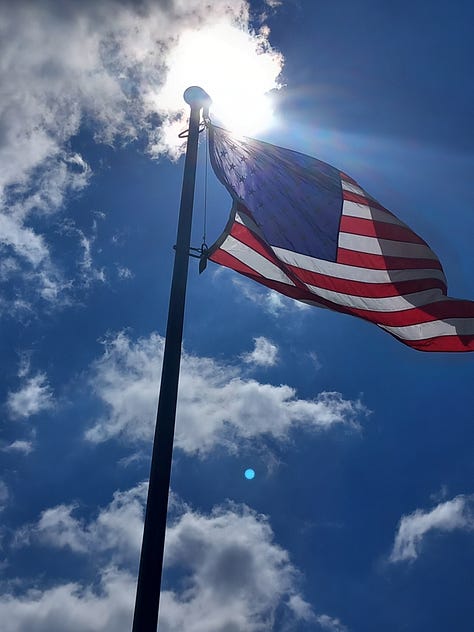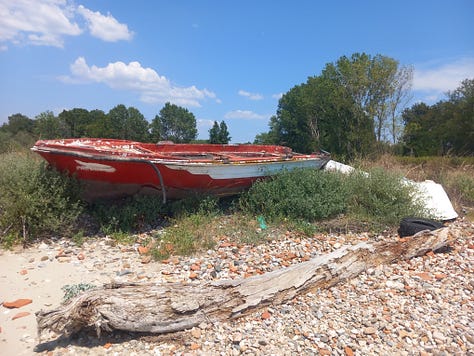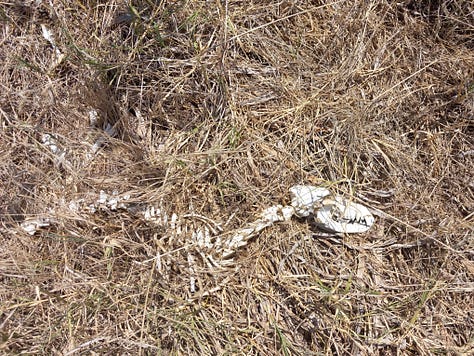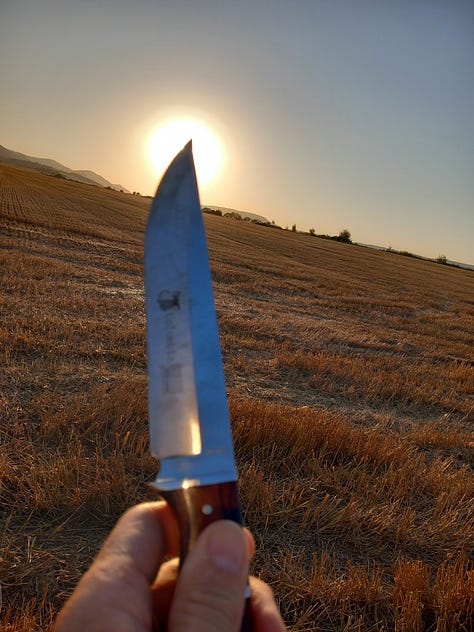Survival Considerations When Traveling or the Highest Probability for Bug-Outs – Flooding/Earthquakes
SwampSession 07-19-24
SwampEx: Survival Considerations When Traveling or the Highest Probability for Bug-Outs – Flooding/Earthquakes
Being ready for the highest probable catastrophic event will help increase your odds to properly react.
With the Gator Swampercise (exercise) methodology, you can have the frameworks of thought to use your intuition and think through any situation.
For the past several weeks I have been traveling to different areas of the world. In each area I took time to orient myself to the landscape (the potential future AoB/O– Area-of-Bug-Out). I learned many lessons and annotated the Gator Learning Rally Points (GLRP) and summarized them for you in this post.
Sample AoB/O:
Kuwait, Bulgaria, Greece, Belgium, Germany, Virginia, Minnesota.









More Gator Learning Rally Points (GLRP’s) to follow with specific details for each country specific exercise soon to follow in future posts. Check out the Gator Learning System online at the Gator Academy.
SHAPE REAL PLANS: When disaster strikes and you find yourself in a prolonged disaster, your ability to carry multiple heavy resources may need to be more practical and realistic. The regional climates and the weather composed therein require the need to possess minimal layman skills to prepare worst-case scenarios for regional climates and build protective capabilities to mitigate potential threats. You will not have the luxury of carrying an extensive heavy set of manuals with you; in the dark, in terrible weather, and short on time, the onset of a disaster is the wrong time to become technically proficient in doctrine. It would be best to find a balance with a solid understanding of the information and establish the Knowledge, Skills, and Abilities (KSA’s) to apply concepts to practical action. Take enough supporting notes of the most critical information and ensure you maintain a quick and ready single-source reference that is portable and lightweight to carry.
For example, although I know the distinct methods to sterilize water, I can never remember the specific technique, such as the specific x number of drops of chlorine bleach to add to x amount of water. I have tables developed with quick access to provide this on the go. These notes are field-ready and weather durable to prevent easy destruction.
I am not an absolute expert at home survival preparedness. I have committed more attention to mobile survivability. Yes, be ready at home, keep plenty of supplies properly stores and always be ready. The good thing is the average home can hold a lot of needed supplies and provides safety. But the odds are much greater for a person to face greater hardship during traumatic mobility (Bug-Out) scenarios, therefore it is wise to commit a good amount of attention to proper packing and rehearsal of methods to survive.
In Accordance With (IAW) the below source populace moving events such as earthquakes and floods (after drought) is the leading cause of deaths. Most of these “population moving” scenarios required personnel to abandon their homes leaving all supplies behind. Add the number of personnel displaced and the Family Pain Factor (FPF) experienced is a great risk – hence be ready always to grab your bag and go.
Data Page: Number of deaths from natural disasters by type”, part of the following publication: Hannah Ritchie and Pablo Rosado (2022) - “Natural Disasters”. Data adapted from EM-DAT, CRED / UCLouvain. Retrieved from https://ourworldindata.org/grapher/deaths-from-natural-disasters-by-type [online resource]
//////////////////////////////////////////////////////////////////////////////////////////////////////////////////////////////////////////////////////
Personal Note: The above data is subjective. Is it really validated that global warming is the cause of the issues the earth is experiencing; have they truly identified the real issues, such as:
Poor water management, as the root cause?
What other issues are there with the assumption of the scale and scope and what is the potential true problem?
Would be nice to see reports of weather control type (HAARP’s), true earthquake statuses, etc. Before we can validate a cause-effect relationship of “global warming” - we need to see the energy/activity records of all-weather impacting facilities worldwide, then perhaps we can understand the root cause of planetary weather phenomena.
All destruction of C02 sucking organisms. See this article. Balance Between CO2 and Warming Means Life or Death for Trees
If trees are very important to help deplete C02, then why have they shifted strategies for energy to this “green” program. Cutting down life to burn for energy is ludicrous versus the alternative. Perhaps they should plant more trees if we have to burn natural gas or coal? Or make every car get better gas milage to immediately reduce the amount of C02 emissions, etc. Well, I guess we can know why - because the want the targeted PROBLEM - to gain the necessary REACTIONs - to implement their already prepackage SOLUTION.
Consider this alternative perspective - something just does not seem right. Thier suggested green solutions is actually killing all of God’s Creation.
Michael Moore Presents: Planet of the Humans | A Film by Jeff Gibbs | Full Documentary (youtube.com)
Regardless of a person’s stance on controversial subjects (i.e., global warming, global reset, elitist agendas, etc), all should know what we are seeing come to fruition was foretold in prophecy (it is either being explained/warned what man would do to destroy the earth’s capability to sustain our population). We just may not be able to nail down the actual root causes. Physically people should prudently prepare for coming austere and perilous times. Spiritually, we should not recline to lukewarm Christianity over minute arguments. There is only ONE WAY – a true Christian can be measured in how they love God and their neighbor. Overdo it for Him. If you are on the fence about whether to believe or not, I pray you take those mentioned above. Do not gamble your eternity, especially in light of so much astonishing against-the-odds prophecy fulfillment.
It’s maybe not global warming, but evil man-made purposeful destruction to achieve the results (PROBLEM-REACTION-SOLUTION) to funnel people into the total-control mystery beast system mark which one must worship hi image?
Above: Armor-of-God Campaign Handbook excerpt.
//////////////////////////////////////////////////////////////////////////////////////////////////////////////////////////////////////////////////////
Before traveling I revisited the Gator Table (GT7.6) Considerations When Traveling Outside Your Area (Gator FERPS TACSOP#2, pg. 335). One of the biggest challenges was trying to pack the minimum set of gear I could use while traveling, while trying to keep weight down with competing mission (work or family leave) gear needed for travel. A key lesson learned through experience was gear that was most useful, needed, or redundant. For example, when caught in a survival situation the last thing I want to have to do is dependent on the environment to provide vesicles for water collection, storage, and heating/disinfecting.
To provide you an example, the below excerpts the first 2 of 5 pages from the GT7.6, GFTACSOP2, p. 335-336.
Phase II – Time-Constrained/Event-Triggered Stage: During whatever crisis (i.e., the river levels rise to your doorstep, the electricity goes out, chemical spill on rails nearby, etc), it is the wrong time to think about what actions your Small-Group-Unit (SGU) must take or what resources you may need. The planning and preparation in Phase I will ultimately lead to better preparedness in the PLANS stage.
The SGU C3 (Command, Control & Communicate) system must be reliable, responsive, and durable. Complete the P4G and SHAPE REAL PLANS process and everything therein (surveys, estimates, alternative development and analysis, planning, resourcing, educating, rehearsing, assessing, etc). Always be vigilant and prepared for PLANS. The last phase in the SHAPE REAL PLANS phases.
STAGE III: PLANS – Once the SHAPE and REAL stages are complete, your efforts should not be placed on shelves to gain dust, become outdated, and be forgotten. This should be a living, adaptable, real-time process:
P – Procedures: Break out your previous drafting efforts of your FELP’s Gator Tables (GT1.13) and practice. Battle drills are “a collective action rapidly executed without applying a deliberate decision-making process.” These require minimal leader orders to accomplish and are standard throughout the Army. A “cue” signals an event and kicks off actions. Adapt this mentality for your SGU.
L – Leading: Leadership includes the ability to influence the actions of others. Also, it includes responsibility and accountability.
A – Actions: Decisive yet prudent actions. Indecisiveness can be a huge risk to survival. For example, waiting too long to Bug-Out in the face of an oncoming hurricane. Procedures and Leading are the methods we use to invoke action and are closely tied together. Your SGU must have and know procedures to execute and act to survive in any scenario.
N – Needed 4: Essential to survival to improve statistical averages for not just survival but living confidently and free from fear.
S – Survival is a good mnemonic for the execution (PLANS) phase of the time-constrained decision-making process in FERPS, but make sure you understand and have thoroughly reviewed and prepared for the deliberate decision-making in the SHAPE stage:
• S – Size up the Situation (surroundings, equipment, and physical condition).
• U – Undue Haste Makes Waste – Use Your Senses.
• R – Remember Where You Are.
• V – Vanquish Panic and Fear.
• I – Improvise.
• V – Value Life.
• A – Act like the Natives.
• L – Live by Your Wits – Learn Basic Skills.
Note: Foreign Area Travel: FEMA focuses on national domestic elements of planning. Do not paralyze yourself by being totally dependent on external organizations. Parallel your estimates for ventures in differing national regions and overseas. Bridge applicability of this planning for Bug-Outs to an alternate location outside of your regional area. Do not put full reliance on FEMA, especially in a total BIG-ONE catastrophic disaster. Maximize the use of taxpayer-paid resources by combining them into your plans. Utilize what works for you and modify your plans based on your specific intents and capabilities. Create and maintain critically important contact lists and resources for proper management and preparation of insurance, key documents, financial preparedness, etc.
WARNING: Note the resources FEMA provides support during regional disasters. But, during major Total Catastrophic Disasters (TCD) scenarios, the playbook is not quite academic regarding how events will “pan out.” For example, FEMA camps do not allow personal weapons, which would constrain your choices to go to a place where you cannot bring personal individual protection (i.e., firearms). Therefore, remain objective to any information you read, including the information in this book.
Everything in life is subjective to the information available at any present time and purported “facts” may not be truly what we think they are when the veil of false reality rises and exposes the absolute truth.
The wrong time to realize you are weak in map reading & land navigation skills is when
surviving. The Gator publications provide several Gator Tables in GFHB2 to help w/learning. For example:
• GT7.2: Alternative Navigation Methods (w/o Compass or GPS)
• GT7.3: What to do if Lost
• GT7.4: Waterborne Operations
• GT7.5: Crossing Rivers & Streams.
• GT7.6: Considerations When Traveling Outside Your Area
• GT7.7: Map Reading (FM 21-26)
• GT7.8: Land & Navigation – Part I (FM 21-26)
While moving constantly conduct Consistent Orienteering (GT2.1.1).
Know how to read the weather and take action in Bad Weather Signs (GT2.1.2).
The GFTACSOPs provide great checklists to help, for example the Tactical Deployment Guide:
Conduct a rapid inventory of your Initial Readiness Level (IRL) based on the tangible assets of gear and resources you have, and the intangible measures based on SGU readiness in technical and tactical KSA's in survival and emergency disaster principles.
Funnel your attention in several focused Swampercises (SwampEx). These exercises will help you get a grasp on the expedient and immediate rally of information to help you w/initial decision-making for your situation.
GSTS: Gator Swamp Task Steps – Significant Work And Major Priority Task Steps: This priority-of-work philosophy should become an ingrained mnemonic to assist with ordering tasks in their ranking of importance.
When the cue (event trigger) occurs, where will your survival gear/Bug-Out bag be located?
How will you recognize the severity of each risk, and how to rank and file inherent and
implied tasks?
Then manage these tasks while initiating movement, ensuring simultaneous and
synchronous progressive order accomplishment.
Once a cue/disaster commences, where will you go, and what will be your objective?
Learn efficient and deliberate movement.
Make sure you are always hydrated and in sound, healthy condition.
Movement may have risks and include rough terrain, slippery wet surfaces, steep rocky hills, and fast-moving water; I recommend wearing braces (knee, back, etc.) or any support needed.
You must be very careful to avoid any injuries.
Properly Prepare: Always pack a small first-aid kit for any minor issues. Consider if cell service is out; how will you communicate with your SGU?
Different Configurations for Different Scenarios: Your planned efforts and focus will be different for short camping trips or long-term Bug-Out situations.
Remember, this does not need to be a fear-laden worry fest.
Keeping the concept in mind of combining emergency preparedness with a bit of fun
with camping will help provide purposeful objectives to learn and acquire new skills and
conduct real tests while in the elements.
AoB – Area of Bug-Out: The targeted area that you plan to deploy and be useful for preplanning, or the resultant are of survival operations that you migrate to in response to a disaster/energy crisis.
GMOB Kit – Gator Bug-Out Mobility Kit: A workable system to provide added capacity and mobility will be an extremely helpful asset in any situation. The means and modes of transport to and from point A to target point B may be dictated by the terrain and the capability to reach your objective.
Influencing Factors & Movement Decision-Making: Consider the factors that influence the decisions to travel, and the supporting equipment needed and available. Before employing movement techniques, go over the factors which influence a survivor’s decision to travel.
Personnel should be thoroughly familiar with all of their equipment and where it is located and know how to employ field expediency to utilize natural materials in the area. Preplan what equipment should be retained and what should be left behind in an isolating event. The first few minutes is the most critical period and there is a great deal to think about are for a survivor:
o Avoid panic and do not take any action without thinking.
o Try to recall any previous briefings, standard operating procedures, or training and choose a course of action which will most likely result in successful survival.
o Quick consideration must be given to landmarks, bearings, and distance to safety, likely location for recovery, and the initial direction to take for evasion. Knowledge of what to expect is important. When circumstances arise which have been considered in advance, a course of action can be carried out more quickly and easily.
o Survivors should try to adapt this knowledge and any skills they have to their particular situation.
o Flexibility is most important, as there are no hard and fast rules governing what may happen in a survival experience.
o Any movement has the inherent risk of exposure; some specific principles and practices must be observed.
o In hostile scenarios assess the risks of taking the easier or shorter routes – watch and listen (SLLS –Stop, Look, Listen, Smell) frequently and seeking concealment sites.
If the decision is to stay, these problems should be considered:
o Environmental conditions.
o Health and body care; camp sanitation.
o Rest and shelter.
o Water supplies.
o Food.
If the decision is to travel: In addition to the primary survival problems of providing food, water, and shelter, the following must be considered:
o Direction of travel and why.
o Travel plan.
o Equipment required.
God bless and good luck in your endeavors.
FM21-76 describes how some survivors had a critical component despite little or no survival training – mental attitude and capacity can be key to survival.
Reinforcement Point: Army survival doctrine in FM21-76:
“It takes much more than the knowledge and skills to build shelters, get food, make fires, and travel without the aid of standard navigational devices to live successfully through a survival situation. Some people with little or no survival training have managed to survive life-threatening circumstances. Some people with survival training have not used their skills and died. A key ingredient in any survival situation is the mental attitude of the individual(s) involved. Having survival skills is important; having the will to survive is essential. Without a desk to survive, acquired skills serve little purpose and invaluable knowledge goes to waste.”
JLTW – Jesus Leads the Way!
The fair use of a copyrighted works cited for purposes such as comment, news reporting, teaching (including multiple copies for classroom use), scholarship, or research, is not an infringement of copyright. This forum may contain content not endorsed or authorized for use by its owner. The use of the material falls under the guidelines of fair use to provide comment. Link to Section 107 of the Copyright Act https://www.copyright.gov/title17/92chap1.html#107











